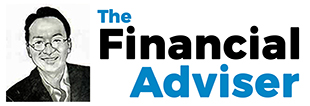
Cash flow is the lifeblood of any business—the cash that goes in and out of your company determines your financial position. In particular, managing how your cash flows in and out of your bank account depends on how you balance the timing of your cash collections from clients with cash payments to your suppliers.
Slow collection of receivables at a time when you need to pay your suppliers could give you unnecessary financial stress. You may need to borrow to bridge your working capital needs or you risk getting a credit downgrade from your suppliers.
On the other hand, if you collect efficiently but pay your suppliers too soon, you might incur significant opportunity costs. Managing your cash means you need to collect cash from your customers as soon as possible while paying your suppliers as slow as possible.
Measuring Cash Flow
To manage your cash, you need to project your cash flows over a period of time— weekly, monthly, quarterly or annually—to serve as your guide. Start your cash flow projection with the beginning cash balance for the month—use your latest bank balance from the previous month. How much of your accounts receivable do you expect to collect during the period? Do your customers pay by installments?
If so, how are the payments scheduled over the following weeks? How much of the sales are on cash basis? Do you require customers to pay down payments? If so, you also need to project your sales growth over the period to determine your cash collections.
After projecting cash receipts (or the cash flowing in), you will need to project your cash disbursements (cash flowing out). You can divide your cash outlays into non- discretionary and discretionary cash outlays.
Non-discretionary cash outlays are those that you are bound to spend during the period. These expenditures are salaries and wages, utilities, rentals and other operating expenses. You can also include here the schedule of payments to suppliers and amortizations to banks.
The discretionary cash outlays are those that you plan to spend tentatively. Among discretionary outlays are office renovation, acquisition of new office equipment or hiring of additional staff.
Subtract total cash disbursements from your cash receipts and you get your projected net cash flow. If this comes out negative, it means you projected to have cash deficits for the period and you need to do something to keep the figure in positive territory or to at least diminish the gap between receipts and expenditures.
Improve Cash Collections
Encourage your customers to pay you as soon as possible. Here are some tips to increase your cash collections:
1. Offer discounts to customers who pay you before due dates.
2. Ask customers to make down payments when they order.
3. Establish a customer credit policy that will determine credit limits.
4. Mark down slow-moving inventory to convert to cash quickly.
5. Monitor receivables regularly by identifying those that are about to become due and those that have become overdue. These items require immediate action.
Manage Cash Payments
Your objective in managing cash payments is to delay them as long as possible. Here
are some tips that you can apply:
- Pay on the due date, not earlier. If a payment is due in 30 days, don’t pay it in 15 days.
- Use bank checks instead of cash on the due date unless supplier requires otherwise.
- Establish a track record with your suppliers so that you could request delays in payments in the future, if your business needs it, without them losing their trust in you.
- Carefully evaluate your supplier’s offers of discounts for earlier payments. You could sometimes save a great deal if you take advantage of discounts.
- Negotiate for flexible payment terms. Sometimes, it is better to pay a little extra on price if you could stretch your payment terms as long as possible.
When you understand how to measure and manage your cash flow, you will have a sense of order and well being that extends to yourself, not only your business.
![]()

